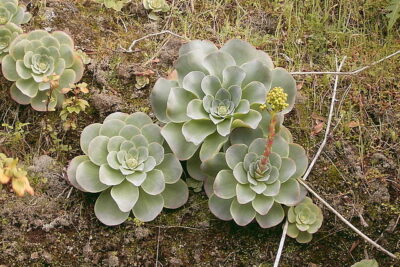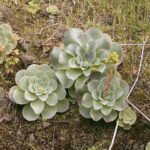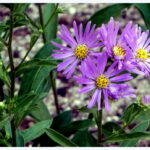
Can Succulent Plants Survive Outside Year-Round?

Succulent plants have gained popularity in recent years due to their unique and attractive appearance, as well as their reputation for being low-maintenance. These plants, characterized by their thick and fleshy leaves, are well-adapted to survive in dry and arid environments. However, many succulent owners wonder if their plants can survive the harsh conditions of the outdoors year-round.
We will explore the ability of succulent plants to thrive outside throughout the year. We will discuss the natural habitat of succulents and how their adaptations allow them to withstand extreme temperatures and limited water availability. Additionally, we will provide tips and guidelines on how to properly care for succulents if you choose to keep them outdoors, including considerations for climate, sunlight, and soil conditions. By the end of this article, you will have a better understanding of whether it is possible to keep your succulent plants outdoors year-round and how to ensure their survival in various environmental conditions.
- Yes, succulent plants can survive outside year-round
- They are hardy and can withstand different climates
- Some succulents are more cold-tolerant than others
- Proper care and protection can help them survive in colder regions
- Avoid overwatering during winter to prevent root rot
- Planting succulents in well-draining soil is essential
- Provide adequate sunlight for healthy growth
- Mulching can help regulate soil temperature
- Using protective covers or bringing them indoors during extreme weather conditions can ensure their survival
- Frequently Asked Questions
Yes, succulent plants can survive outside year-round
Many people are drawn to succulent plants because of their unique and beautiful appearance. With their thick, fleshy leaves and ability to store water, succulents have adapted to survive in arid and dry environments. But can they withstand the harsh conditions of the outdoors throughout the year? The answer is a resounding yes!
Succulents are remarkably resilient plants. They have evolved to thrive in various climates and can adapt to different conditions, making them suitable for outdoor cultivation. Whether you live in a hot and dry desert or a cooler and more humid climate, succulents can handle it all.
Here are a few reasons why succulents can survive outside year-round:
- Drought-tolerant nature: Succulents have the remarkable ability to store water in their leaves, stems, and roots. This adaptation allows them to survive extended periods without rainfall, making them ideal for outdoor cultivation.
- Temperature tolerance: Succulents are known for their ability to withstand extreme temperatures. They can survive in scorching heat as well as freezing cold, making them a hardy choice for outdoor gardens.
- Low maintenance requirements: Succulents are relatively low-maintenance plants. They don't require frequent watering like other plants, which makes them perfect for outdoor spaces where irrigation systems may not be readily available.
- Adaptability: Succulents have the remarkable ability to adapt to their surroundings. They can acclimate to different light conditions, soil types, and humidity levels, making them versatile and suitable for outdoor cultivation.
However, it's important to note that while succulents can survive outside year-round, their specific care needs may vary depending on the climate and region you live in. It's always a good idea to research the specific succulent species you plan to grow and understand their optimal growing conditions.
Succulent plants are well-suited for outdoor cultivation and can survive outside year-round. Their resilience, drought tolerance, temperature adaptability, and low maintenance requirements make them an excellent choice for gardeners looking to add a touch of beauty and uniqueness to their outdoor spaces.
 Revamp Your Indoor Succulent Garden with Grow Lights: Before and After
Revamp Your Indoor Succulent Garden with Grow Lights: Before and AfterThey are hardy and can withstand different climates
Succulent plants are known for their ability to survive in harsh conditions, making them a popular choice for indoor and outdoor gardens. While they are often associated with dry, desert-like environments, many succulents can actually thrive in various climates.
Unlike other delicate plants, succulents have adapted to store water in their leaves, stems, and roots, allowing them to survive in arid regions. This unique adaptation enables them to withstand droughts and periods of low rainfall.
In addition to their water storage capabilities, succulents also have thick, fleshy leaves that help reduce water loss through evaporation. This feature allows them to endure high temperatures and direct sunlight without wilting or drying out.
However, it is important to note that not all succulent species are created equal when it comes to their ability to survive outside year-round. Some are more cold-tolerant, while others thrive in warmer climates.
Cold-Tolerant Succulents
For gardeners living in regions with cold winters, there are several succulent species that can withstand freezing temperatures. These cold-tolerant succulents include:
- Sempervivum: Commonly known as "hens and chicks," Sempervivum varieties are extremely cold-hardy and can survive temperatures as low as -20°F (-29°C).
- Sedum: Sedums are another group of succulents that can tolerate cold climates. With their thick leaves and hardy nature, many Sedum species can withstand temperatures down to -30°F (-34°C).
- Agave: While most Agave species prefer warm climates, some varieties, such as Agave parryi, are surprisingly cold-tolerant and can endure temperatures as low as 0°F (-18°C).
Warm Climate Succulents
On the other hand, if you live in a region with mild or tropical climates, there are numerous succulents that thrive in warmer temperatures. These warm climate succulents include:
- Aloe: Aloe vera and other Aloe species are well-known for their ability to tolerate heat and drought. They are commonly found in arid regions and can withstand temperatures up to 100°F (38°C).
- Echeveria: Echeverias are popular succulents that prefer warm climates. They thrive in temperatures ranging from 70°F to 85°F (21°C to 29°C).
- Kalanchoe: Kalanchoes are native to tropical and subtropical regions, making them perfect for warm climate gardens. They can handle temperatures up to 90°F (32°C) without any issues.
When choosing succulents for your garden, it is essential to consider your local climate and the specific needs of each plant species. With proper care and attention, succulents can indeed survive outside year-round, adding beauty and resilience to your garden.
 Aerial Roots and Succulent Growth: A Comprehensive Exploration
Aerial Roots and Succulent Growth: A Comprehensive ExplorationSome succulents are more cold-tolerant than others
When it comes to choosing succulent plants for your outdoor garden, it's important to consider their cold tolerance. While succulents are known for their ability to withstand dry conditions, not all of them can handle extreme cold temperatures. Some varieties of succulents are better suited for outdoor living year-round, while others may need to be brought indoors during the winter months.
Generally speaking, succulents native to arid regions such as deserts are more cold-tolerant than those from tropical or subtropical climates. These plants have adapted to survive in harsh conditions, including freezing temperatures at night and scorching heat during the day.
Here are some cold-tolerant succulents that can survive outside year-round:
- Sempervivum: Also known as hens and chicks, these rosette-shaped succulents are incredibly hardy and can withstand temperatures as low as -20°F (-29°C). They come in a variety of colors and are perfect for adding texture to your outdoor garden.
- Sedum: With its thick, fleshy leaves and low-growing habit, sedum is an excellent choice for outdoor gardens. It can tolerate temperatures as low as -30°F (-34°C) and is available in a wide range of shapes, sizes, and colors.
- Agave: Agave plants are known for their striking architectural forms and ability to thrive in arid climates. While some varieties are more cold-sensitive, there are cold-hardy species that can withstand temperatures as low as 0°F (-18°C).
- Opuntia: Commonly known as prickly pear cactus, opuntia is a tough succulent that can survive freezing temperatures. It's important to choose cold-hardy varieties, as some opuntia species are more sensitive to cold.
Remember to consider your local climate and microclimates when selecting succulents for your outdoor garden. Even cold-tolerant succulents may require protection, such as mulching or covering, during severe winter weather.
While these succulents can withstand colder temperatures, it's important to note that prolonged exposure to freezing conditions can still damage them. If you live in an area with extremely cold winters, it may be best to bring your succulents indoors or provide them with additional protection during the coldest months.
Overall, with the right selection and care, many succulent plants can thrive outdoors year-round, adding beauty and interest to your garden even during the colder months.
 Can Fuzzy Kalanchoe Succulents Thrive Indoors?
Can Fuzzy Kalanchoe Succulents Thrive Indoors?Proper care and protection can help them survive in colder regions
Succulent plants are known for their ability to thrive in arid and dry conditions, making them a popular choice for indoor gardens. However, many succulent enthusiasts wonder if these plants can survive outside year-round, especially in colder regions.
The answer is yes, succulent plants can survive outside in colder regions, but they require proper care and protection. Here are some tips to help your succulents thrive in less-than-ideal conditions:
1. Choose cold-hardy succulent varieties
Not all succulents are created equal when it comes to cold tolerance. Some varieties, like Sedum, Sempervivum, and Agave, are more cold-hardy and can withstand freezing temperatures. Research and select succulent species that are known to survive in your specific climate.
2. Provide adequate drainage
One of the most important factors in succulent plant care is ensuring proper drainage. Succulents are prone to rot if they sit in waterlogged soil, especially in colder temperatures. Make sure your succulents are planted in well-draining soil and use containers with drainage holes to prevent water from accumulating.
3. Protect them from frost
Frost is one of the biggest threats to succulents in colder regions. When temperatures drop below freezing, the water inside the plant's cells can freeze and cause damage. To protect your succulents from frost, cover them with a frost cloth or bring them indoors during frosty nights.
4. Provide shelter from harsh winds
Succulent plants are adapted to dry and arid conditions, but they are not as tolerant of strong winds. In colder regions, harsh winds can quickly dehydrate succulents and cause damage. Consider placing your succulents in a sheltered location, such as near a wall or under a porch, to provide some protection from strong winds.
 Choosing the Best Habitat for Thriving Succulents: Indoor or Outdoor?
Choosing the Best Habitat for Thriving Succulents: Indoor or Outdoor?5. Adjust watering routine
In colder regions, succulents enter a period of dormancy during winter. During this time, their water requirements are significantly reduced. Adjust your watering routine accordingly and water your succulents sparingly. Overwatering during winter can lead to root rot and other issues.
6. Mulch for insulation
Adding a layer of mulch around your succulents can provide insulation and help regulate soil temperatures. Organic mulch, such as dried leaves or bark chips, can help retain moisture in the soil and protect the roots from extreme temperature fluctuations.
By following these tips and providing proper care and protection, you can help your succulent plants survive outside year-round, even in colder regions. Remember to monitor the weather conditions and adjust your care routine accordingly to ensure the health and longevity of your beloved succulents.
Avoid overwatering during winter to prevent root rot
During the winter months, it is important to be cautious about overwatering your succulent plants. Excessive moisture in the soil can lead to root rot, which can be detrimental to the health and survival of your plants. While succulents are known for their ability to store water in their leaves and stems, they still require some level of hydration even during the colder months.
To ensure that your succulents survive outside year-round, it is crucial to strike a balance between providing enough water and avoiding overwatering. One way to achieve this is by monitoring the moisture levels of the soil. Before watering, check the top inch or two of the soil to see if it feels dry. If it is still moist, it is best to hold off on watering until the soil has dried out.
Another important factor to consider is the temperature. Succulents are more dormant during the winter and do not require as much water as they do during the warmer months. As the temperature drops, their growth slows down, and their water requirements decrease accordingly. Adjusting your watering schedule to match the seasonal changes can help prevent overwatering and root rot.
Additionally, it is advisable to water your succulents in the morning when the temperature is warmer. This allows any excess moisture on the leaves or in the soil to evaporate throughout the day. Watering in the evening or at night can increase the chances of the water lingering on the leaves or in the soil, leading to potential issues with rot or fungal growth.
 Indoor Succulents: Thriving Tall Plants for Your Home
Indoor Succulents: Thriving Tall Plants for Your HomeRemember to observe your succulents closely during the winter months. Look out for signs of overwatering, such as wilting, yellowing, or mushy leaves. If you notice any of these symptoms, it is crucial to adjust your watering routine immediately and allow the soil to dry out thoroughly before watering again.
Protect your succulents from frost and extreme cold
In regions with freezing temperatures, it is essential to take precautions to protect your succulent plants from frost and extreme cold. While some succulent varieties are more cold-hardy than others, most will benefit from some form of winter protection.
- Covering: Use frost cloths or blankets to cover your outdoor succulents during cold snaps or frosty nights. These covers can help insulate the plants and provide some protection against freezing temperatures.
- Moving indoors: If you have potted succulents, consider moving them indoors during the winter months. Find a bright and well-ventilated area where they can receive sufficient light and temperature control.
- Creating microclimates: In colder regions, you can create microclimates by strategically placing your succulents against a south-facing wall or near heat-absorbing materials like rocks or concrete. These structures can absorb and radiate heat, providing some extra warmth and protection.
- Mulching: Apply a layer of organic mulch around the base of your succulents to insulate the soil and protect the roots from extreme temperatures. Mulching also helps retain moisture in the soil, which can be beneficial during dry winter periods.
By implementing these measures, you can increase the chances of your succulents surviving outside year-round, even in colder climates. Remember that each succulent species has different cold tolerance levels, so it is essential to research and understand the specific needs of your plants to provide them with the best care.
Planting succulents in well-draining soil is essential
Succulent plants are known for their ability to store water in their leaves, stems, and roots, allowing them to survive in arid conditions. However, even these resilient plants need proper care and attention when it comes to their planting medium.
When planting succulents, it is crucial to use well-draining soil. This means that the soil should allow water to flow through it easily, preventing the roots from sitting in stagnant water. Succulents are prone to root rot if they are constantly exposed to moisture, so providing them with the right soil is vital for their survival.
One option for well-draining soil is a mixture of potting soil, perlite, and coarse sand. This combination ensures that excess water can drain away from the roots, preventing waterlogged conditions. It also provides aeration for the roots, allowing them to breathe and access the oxygen they need.
 Can a Violet Queen Succulent Thrive Indoors? Tips for Indoor Care
Can a Violet Queen Succulent Thrive Indoors? Tips for Indoor CareAnother alternative is using a specialized succulent or cactus mix, readily available at garden centers. These mixes are specifically formulated to provide the ideal growing environment for succulent plants.
Remember to choose a container with drainage holes to further aid in proper water drainage. Without adequate drainage, the excess water will accumulate in the pot, leading to potential root rot.
By planting succulents in well-draining soil, you are providing them with the optimal conditions for their growth and survival. This simple step can make a significant difference in the health and longevity of your succulent plants.
Provide adequate sunlight for healthy growth
Succulent plants are known for their ability to thrive in harsh conditions, but providing them with adequate sunlight is crucial for their healthy growth. These plants have adapted to survive in arid regions by storing water in their leaves, stems, and roots. To ensure that your succulents can survive outside year-round, it's important to provide them with the right amount of sunlight.
Most succulent plants require at least 6 hours of direct sunlight each day. This means that they should be placed in an area where they can receive the maximum amount of sunlight. You can choose a spot in your garden or balcony that gets ample sunlight throughout the day. If you are growing succulents indoors, place them near a south-facing window to ensure they receive sufficient sunlight.
However, it's essential to strike a balance when it comes to sunlight exposure. While succulents need sunlight for photosynthesis and growth, excessive exposure to intense sunlight can lead to sunburn and damage the plants. If you notice that the leaves of your succulents are turning yellow or brown, it may be a sign of sunburn. In such cases, it's best to move your plants to a slightly shadier area or provide them with some protection, such as a sheer curtain or shade cloth.
 Indoor or Outdoor: Choosing the Right Environment for Your Succulents
Indoor or Outdoor: Choosing the Right Environment for Your SucculentsRemember that different types of succulents have varying sunlight requirements. Some may tolerate more shade, while others thrive in full sun. It's important to research the specific needs of the succulents you are growing to ensure they receive the appropriate amount of sunlight.
In addition to sunlight, succulents also benefit from a period of darkness each day. Just like any other plants, they need time to rest and rejuvenate. Make sure to provide them with at least 6-8 hours of darkness each night to support their growth and overall health.
By providing your succulent plants with the right amount of sunlight and darkness, you can help them thrive outside year-round and enjoy their beauty for years to come.
Mulching can help regulate soil temperature
Mulching is an effective technique that can help regulate soil temperature and protect succulent plants when they are grown outside year-round. By applying a layer of mulch around the plants, you create a barrier that insulates the soil, preventing extreme temperature fluctuations.
When succulent plants are exposed to freezing temperatures, their cells can become damaged, leading to discoloration, wilting, or even death. Mulching provides a protective layer that helps to retain heat in the soil during colder months, preventing frost damage.
Not only does mulching regulate temperature, but it also helps to conserve moisture in the soil. Succulent plants are known for their ability to store water in their leaves and stems, but they still require some moisture in the soil to thrive. By applying mulch, you reduce evaporation and maintain a more stable moisture level, preventing the soil from drying out too quickly.
There are various types of mulch that can be used for succulent plants, including organic options like shredded bark, wood chips, or straw. These materials not only regulate temperature and moisture but also break down over time, providing nutrients to the soil.
 Can Succulents Survive Outdoors Year-Round?
Can Succulents Survive Outdoors Year-Round?It is important to apply mulch correctly around succulent plants. Start by clearing any weeds or debris from the area. Then, spread a layer of mulch approximately 2-4 inches thick around the base of the plants, leaving a small space around the stem to prevent moisture buildup and potential rot. Avoid piling mulch directly against the plant stems, as this can create a damp environment that is favorable for pests and diseases.
Using protective covers or bringing them indoors during extreme weather conditions can ensure their survival
Succulent plants are known for their ability to thrive in arid conditions. Their thick, fleshy leaves and stems help them store water, making them perfect for dry climates. However, when it comes to withstanding extreme weather conditions, such as freezing temperatures or heavy rainfall, succulents may need a little extra help.
One way to ensure the survival of your succulent plants is to use protective covers during harsh weather. These covers can shield the plants from freezing temperatures, frost, and excessive moisture. You can find specialized covers designed for succulents at gardening stores or online. Alternatively, you can create your own covers using materials like burlap or frost blankets.
When using protective covers, it's important to remember that succulents still need some air circulation to prevent rot or fungal growth. Make sure to secure the covers loosely around the plants, allowing for some ventilation. Additionally, remove the covers during periods of milder weather to prevent overheating or excessive moisture buildup.
In regions with extremely harsh winters, it may be necessary to bring your succulent plants indoors. This is especially true if temperatures consistently drop below freezing for extended periods. Find a bright spot in your home, such as a sunny window sill, and place the succulents there. Keep in mind that succulents still need sufficient light, so ensure they receive adequate sunlight or consider using grow lights.
Before bringing your succulents inside, it's essential to thoroughly inspect them for pests or diseases. Quarantine any affected plants to prevent the spread of pests or diseases to your other houseplants. Additionally, adjust the watering schedule for indoor succulents since they won't be exposed to the same drying conditions as they would outdoors.
 Indoor Succulent Care: Expert Tips for Blue Succulents
Indoor Succulent Care: Expert Tips for Blue SucculentsRemember that while succulents are hardy plants, extreme weather conditions can still pose a risk to their survival. By using protective covers or bringing them indoors during harsh weather, you can ensure that your succulents thrive and continue to beautify your garden year-round.
Frequently Asked Questions
1. Can Succulent Plants Survive Outside Year-Round?
Yes, many succulent plants are well adapted to outdoor environments and can survive year-round as long as they are provided with the right conditions.
2. Do Succulents Need Full Sun to Thrive?
While succulents generally prefer full sun, some varieties can also tolerate partial shade. It's essential to understand the specific light requirements of your succulent species.
3. How Often Should I Water My Succulent Plants?
Succulents have low water requirements and are prone to root rot if overwatered. As a general rule, it's best to water them infrequently but thoroughly, allowing the soil to dry out between watering sessions.
 Indoor or Outdoor: Maximizing Succulent Growth for Optimal Results
Indoor or Outdoor: Maximizing Succulent Growth for Optimal Results4. Can Succulents Be Grown Indoors?
Yes, many succulents can be grown indoors successfully. However, it's crucial to provide them with adequate light, well-draining soil, and proper ventilation to prevent issues like etiolation and fungal diseases.
If you want to read more articles similar to Can Succulent Plants Survive Outside Year-Round?, you can visit the Indoor and Outdoor Care category.






You Must Read